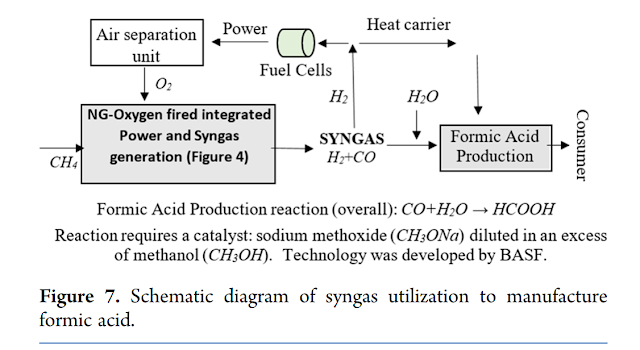Suppose you need to calculate the amount of carbon in coal for someone who was pondering creating hydrogen from it.
One way is as follows:
1. Find out how much CO2 a coal-fired power station emits for each megawatt-hour of electricity it sends out.
2. Find out how many tonnes of coal the same coal-fired power station burns for each megawatt-hour of electricity it sends out.
3. From the above pieces of information, calculate how much CO2 is produced from each tonne of coal the power station burns.
4. Calculate the amount of carbon in the CO2 that is produced from each tonne of coal that is burned.
The Australian Government's National Greenhouse and Energy Reporting site provides a sample of some of the information -
 |
| Australian Government's National Greenhouse and Energy Reporting Yallourn Power Station |
Energy Australia provided the corresponding information for coal consumption Yallourn Power Station on its web site a few years ago. This is a sample retrieved from the WayBack Machine -
 |
| Coal consumption at Yallourn coal-fired power plant |
The above information is sufficient for the calculations suggested above -
1. CO2 per MWh : 1.34 tonnes.
2. Coal per MWh : (1,480 MWh from burning 2,400 tonnes of coal) => 1.62 tonnes per MWh.
3. The amount of CO2 for each tonne of coal?
1.34 tonnes of CO2 are produced from burning 1.62 tonnes of brown coal.
So burning 1 tonne of coal produces 0.83 tonnes of carbon dioxide.
4. The formula weight of carbon dioxide shows that 44 grams of carbon dioxide is made of 12 grams of carbon and 32 grams of oxygen. In other words the amount of carbon in carbon dioxide is (12/44) times the mass of the carbon dioxide.
So the carbon in 0.83 tonnes of carbon dioxide is 0.225 tonnes. (= 0.83 tonnes x (12 / 44).)
0.225 tonnes is 225 kgs of carbon in each tonne of brown coal burned at Yallourn Power Station.
This should not be a controversial or surprising answer.
The calculations to estimate that there are 225 tonnes of carbon using publicly available information about Victorian brown coal are not terribly complex.
These following calculations are surprising:
1. In a 2019 report "Evaluation of options for production of low-cost CO2 - free hydrogen from Victorian brown coal" the details for option 4: "Brown coal gasification plant using oxygen blown entrained flow gasifier followed by shift reactor for H2 production " given on page 35 are listed in the table below.
The two lines of special interest are the ones showing -
- Wet coal of 893 tonnes per hour and
- Total CO2 generation of 518 tonnes per hour.
A few calculations show that each tonne of coal in this modelling exercise is assumed to produce 0.58 tonnes of carbon dioxide, and
This means that the coal for the purpose of this model have only 160 kgs of carbon in each tonne.
Target production of H2
Wet coal requirement
Dry coal
Excess char to refinery
Tar production
Total CO2 generation
CO2 capture efficiency
Steam requirement
32.1 tons/hour
893 tons/hour
332 tons/hour
Nil
Nil
518 tons/hour
88%
344 tons/hour
If the calculation of carbon coal burned by the Yallourn power station - 225 kgs per tonne - is correct, then the carbon in 427 tonnes of wet brown coal is sufficient to produce 32 tonnes of hydrogen by reaction with steam.
This is less than half of the 893 tonnes of wet brown coal the 2019 modelling exercise found to be needed.
2. The web site for the Hydrogen Energy Supply Chain pilot project says that it is to use 150 tonnes of brown coal to produce 3 tonnes of hydrogen.
This is an even greater amount of coal per tonne of hydrogen than the 2019 modelling reported.
The Hydrogen Energy Supply Chain project also estimated that it would produce 100 tonnes of carbon dioxide in producing the hydrogen. This is about double the rate of carbon dioxide produced per tonne of hydrogen that the 2019 modelling reported.
That estimate has since been greatly increased to around 140 tonnes.
The assumptions and calculations in these two examples - the 2019 report, and the Hydrogen Energy Supply Chain project - cannot be reconciled with the information available about the use of coal by the Yallourn Power Station.


